|
Books Should Be Free Loyal Books Free Public Domain Audiobooks & eBook Downloads |
|
|
Books Should Be Free Loyal Books Free Public Domain Audiobooks & eBook Downloads |
|
Top Authors |
|---|
|
Book type:
Sort by:
|
By: Edith Wharton (1862-1937) | |
|---|---|
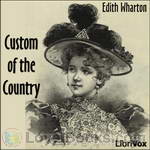 Custom of the Country
Custom of the Country
Edith Wharton was a novelist of manners of late 19th Century New York “Society”, who spent much of her life in France. In this novel she tells the story of Undine Sprague, the thrice- (or more) married, upwardly mobile beauty from “Apex City”, transplanted to New York, and finally to France, leaving the dead and wounded in the wake of her “experiments in happiness”. | |
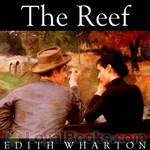 The Reef
The Reef
George Darrow, Anna Leath’s first love, is finally coming from London to propose to her. However, he drifts to an affair with Sophy Viner, Anna’s daughter’s naïve and young governess. Sophy’s relationship with Darrow and Anna’s family can threaten his success. In this novel, as in many of Wharton’s other well known novels, we see the eternal love triangle. With her sly and lovely writing style, Wharton delivers to us in this wonderful novel a cast of unforgettable characters and many unforgettable scenes which we can vividly imagine. What would Darrow choose: success or love? Would Anna marry him despite his affair with Sophy? (Summary by Stav Nisser.) | |
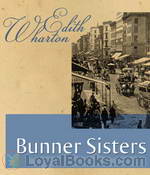 Bunner Sisters
Bunner Sisters
“Bunner Sisters,” like “The Age of Innocence” is set in 1870s New York, however the lives of Ann Eliza and Evelina Bunner reflect impoverished New York. The sisters run a “very small shop, in a shabby basement, in a sidestreet already doomed to decline.” Shabby as it is, the sisters are happy in their small orderly community of supportive women. The story tells of the destruction of this life, and how the once content sisters are thrown into the realistic world outside of their little shop. | |
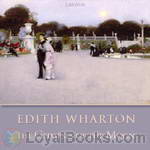 The Glimpses of the Moon
The Glimpses of the Moon
"The Glimpses of the Moon" (1922) is about Nick and Susy Lansing, both of whom live a decadent life in Europe by sponging off wealthy friends. They marry out of convenience and have an "open" relationship, but are unprepared for where their feelings will take them. | |
 The Fruit of the Tree
The Fruit of the Tree
When published in 1907, this novel about the lives of a wealthy mill owner, her socially progressive husband and friends caused a stir due to its treatment of drug abuse, mercy killing, divorce and second marriages. | |
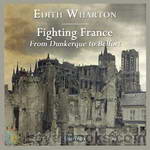 Fighting France, from Dunkerque to Belfort
Fighting France, from Dunkerque to Belfort
American novelist Edith Wharton was living in Paris when World War I broke out in 1914. She obtained permission to visit sites behind the lines, including hospitals, ravaged villages, and trenches. Fighting France records her travels along the front in 1914 and 1915, and celebrates the indomitable spirit of the French people. | |
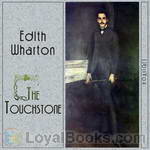 The Touchstone
The Touchstone
Stephen Glennard's career is falling apart and he desperately needs money so that he may marry his beautiful fiancee. He happens upon an advertisement in a London magazine promising the prospect of financial gain. Glennard was once pursued by Margaret Aubyn, a famous and recently deceased author, and he still has her passionate love letters to him. Glennard removes his name from the letters and sells them, making him a fortune and building a marriage based on the betrayal of another. | |
 Sanctuary
Sanctuary
Kate Orme, shocked by the discovery of her fiance's complicity in a tragedy, and by society's willingness to overlook such transgressions, nevertheless marries him. Years later, her son faces a moral crisis similar to the one that showed her his father's moral weakness. (Introduction by Christine Dufour) | |
 The Greater Inclination
The Greater Inclination
This is Edith Wharton's earliest published collection of short stories (1899). Like much of her later work, they touch on themes of marriage, male/female relationships, New York society, and the nature and purpose of art. One of the stories, "The Twilight of the God," is written as a short play. The role of Warland is read by mb, and the role of Oberville by Bruce Pirie. | |
 Crucial Instances
Crucial Instances
This is Edith Wharton's second published collection of short stories (1901). One of these seven stories, "Copy: A Dialogue," is written as a short play. The role of Hilda is read by Arielle Lipshaw, and the role of Ventnor by Mark F. Smith. | |
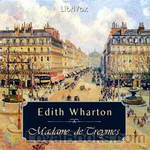 Madame de Treymes
Madame de Treymes
Edith Wharton's 1907 novella explores the milieu of Americans living abroad in Paris. New Yorker John Durham travels to Paris to woo an old flame, Fanny Frisbee, now the Marquis de Malrive. Fanny is separated from her husband and wants to marry John and return to America, but she doubts whether her Catholic husband will grant her a divorce. When John meets Fanny's sister-in-law, the enigmatic Madame de Treymes, he hopes she may be able to help them in their quest for happiness. (Introduction by Elizabeth Klett) | |
 The Marne: a tale of the war
The Marne: a tale of the war
American writer Edith Wharton is known for her novels of manners set in old New York; yet much of her adult life was spent in France. She lived in Paris throughout World War I and was heavily involved in refugee work. Her 1918 novella The Marne dramatizes the events of the war as seen through the eyes of 15-year-old Troy Belknap, an American boy who longs to join up and save his beloved France. | |
 Tales of Men and Ghosts
Tales of Men and Ghosts
Tales of Men and Ghosts was published as a collection in 1910, though the first eight of the stories had earlier appeared in Scribner's and the last two in the Century Magazine. Despite the title, the men outnumber the ghosts, since only "The Eyes" and "Afterward" actually call on the supernatural. In only two of the stories are women the central characters, though elsewhere they play important roles. Wharton enjoys subjecting her subjects -- all of them American gentlemen and gentlewomen, in the conventional senses of the word -- to various moral tests and sometimes ironic tests... | |
 Mother's Recompense
Mother's Recompense
Kate Cephane, now living in self-imposed exile in France, left her three-year-old daughter Anne behind when she fled her impossibly unhappy marriage for a brief affair. When Anne asks her to return because she is getting engaged, Kate risks the scorn and scandal of New York elite society to be reconciled. When she finds out the identity of her daughter's fiancé, Kate is caught in the dilemma of how to prevent the marriage without revealing her past. Either way she will risk losing her daughter once more. | |
 Old New York
Old New York
Old New York is a collection of four novellas by Edith Wharton, revolving around upper-class New York City society in the 1840s, 1850s, 1860s, and 1870s. - Summary from Wikipedia | |
 Decoration of Houses
Decoration of Houses
The Decoration of Houses, a manual of interior design written by Edith Wharton with architect Ogden Codman, was first published in 1897. In the book, the authors denounced Victorian-style interior decoration and interior design, especially those rooms that were decorated with heavy window curtains, Victorian bric-a-brac and overstuffed furniture. They argued that such rooms emphasized upholstery at the expense of proper space planning and architectural design and were, therefore, uncomfortable and rarely used... | |
 Sanctuary (version 2)
Sanctuary (version 2)
Edith Wharton's early novella focuses on Kate Orme, who begins the story happily in love with her fiance, only to discover that he hides a terrible secret. | |
 Custom of the Country (version 2)
Custom of the Country (version 2)
Edith Wharton's 1913 novel is a devastating critique of American upward mobility, told through the journey of Undine Spragg from fictional Midwestern Apex City to New York to Paris. Undine is determined to acquire money and position through marriage, even if it means multiple divorces. | |
 House of Mirth (Version 3)
House of Mirth (Version 3)
The House of Mirth tells the story of Lily Bart, a woman who is torn between her desire for luxurious living and a relationship based on mutual respect and love. She sabotages all her possible opportunities for a wealthy marriage, loses the esteem of her social circle, and dies young, poor, and alone. | |
 Son At The Front
Son At The Front
This is an overlooked novel by the author of House Of Mirth, Age Of Innocence, and more. She already became the first woman to win the Pulitzer prize for literature before this novel was written. Edith Wharton is known for her combination of social observations, criticism, and compassion. This WWI novel is told from the point of view of parents, forced to live their own lives when their son is at the front. John and Julia are divorced parents. When their only son George enlists, Julia and her second husband do their best to give him a desk job... | |
 Descent of Man and Other Stories
Descent of Man and Other Stories
This collection of ten stories, first published in 1904, shows Edith Wharton dissecting some of the customs, habits and vagaries of courtship and marriage, particularly as practiced in the upper reaches of New York society at the turn of the twentieth century (two stories, however, are set in Italy). Fidelity is only one problem; others may arise from the machinations and emotions of the protagonists or outsiders. Wharton handles the questions with her usual gentle (and sometimes not so gentle) irony and curiosity about human behavior. | |
 Age of Innocence (Dramatic Reading)
Age of Innocence (Dramatic Reading)
The Age of Innocence centers on an upper-class couple's impending marriage, and the introduction of a woman plagued by scandal whose presence threatens their happiness. Though the novel questions the assumptions and morals of 1870s' New York society, it never devolves into an outright condemnation of the institution. In fact, Wharton considered this novel an "apology" for her earlier, more brutal and critical novel, The House of Mirth. Not to be overlooked is Wharton's attention to detailing the charms and customs of the upper caste... | |
By: Edith Œnone Somerville (1858-1949) | |
|---|---|
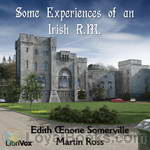 Some Experiences of an Irish R.M.
Some Experiences of an Irish R.M.
This is the first of three novels which Edith Somerville and her cousin Violet Martin wrote about the English Major Sinclair Yates who leaves the army to take up a position of Resident Magistrate in the West of Ireland in about 1895. The tales tell in a humorous way of his struggles with a new job, new culture, and with his landlord and neighbour Mr. ‘Flurry’ Knox whose prime, if not only, interest is in hunting, which forms the background to all the stories. Miss Somerville was herself the first woman anywhere to become an M.F.H. | |
By: editor: Frank Munsey | |
|---|---|
 The Scrap Book Sampler
The Scrap Book Sampler
18 works -- two non-fic articles & one short fiction or poetry each -- from issues March, April, May, June, July, & August 1906 of The Scrap Book, Volume 1, edited by Frank Munsey. As he states in the editorial of the April 1906 issue (Vol 1, Iss 2) this was a sort of supplement to the editor's popular monthly, Munsey's Magazine. The Scrap Book is very like an American version of Punch with many short, often humorous articles interspersed with at least one short story, some poetry, and several longer non-fic pieces. The Scrap Book ran up to 1922. | |
By: Edmond About (1828-1885) | |
|---|---|
 Notary's Nose
Notary's Nose
Ironic and Satirical: A successful Parisian notary, Alfred L’Ambert, is smitten with a fourteen-year-old ballet dancer. After a quarrel, his Turkish rival challenges him to a duel during which the notary gets his nose cut off. Thereupon, a surgeon is called for a grafting. The donor is a simple man from the Auvergne with whom the notary is forced to spend thirty days, his nose being literally glued to the arm of the man. But even after this term, his bad fortune doesn’t come to an end... - Summary by Didier Le Nez d’un notaire - The Notary's Nose in French La Nariz de un notario - The Notary's Nose in Spanish | |
By: Edmond Halley (1656-1742) | |
|---|---|
 Miscellanea Curiosa, Vol 1
Miscellanea Curiosa, Vol 1
"The Royal Society is a Fellowship of many of the world's most eminent scientists and is the oldest scientific academy in continuous existence." . As scientists have explored the world around them, observed and tried to explain natural phenomena, they have been invited to present papers to the Royal Society. Edmond Halley was an eminent member of the society and gathered together some of the most interesting papers of his day. Today, we may see errors in the logic or calculations, based on current knowledge, but these papers are unedited and as presented at the time and show how scientific knowledge was expanding in the late seventeenth and early eighteenth centuries... | |
By: Edmond Hamilton | |
|---|---|
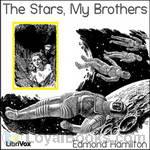 The Stars, My Brothers
The Stars, My Brothers
Edmond Hamilton (1904 – 1977) had a career that began as a regular and frequent contributor to Weird Tales magazine. The first hardcover publication of Science Fiction stories was a Hamilton compilation, and he and E.E. “Doc” Smith are credited with the creation of the Space Opera type of story. He worked for DC Comics authoring many stories for their Superman and Batman characters. Hamilton was also married to fellow author Leigh Brackett. – Published in the May, 1962 issue of Amazing Stories “The Stars, My Brothers” gives us a re-animated astronaut plucked from a century in the past and presented with an alien world where the line between humans and animals is blurred. | |
 The City at World's End
The City at World's End
A surprise nuclear war may cause the End of the World, but not the way anyone could have imagined. A classic science fiction tale from Galaxy Magazine. | |
 Citadel of the Star Lords
Citadel of the Star Lords
Out of the dark vastness of the void came a conquering horde, incredible and invincible, with Earth's only weapon—a man from the past! From Imagination Stories of Science and Fantasy magazine, October 1956. - Summary by Original Gutenberg text | |
 Metal Giants
Metal Giants
Huge metal monsters spread terror throughout the land... the tale of a Frankenstein that turned on its creator! - Summary by Weird Tales Magazine, December 1926 | |
By: Edmondo de Amicis (1846-1908) | |
|---|---|
 Heart: a Schoolboy's Journal
Heart: a Schoolboy's Journal
Little Enrico Bottini is a ten year-old third grade student in Italy who keeps a diary for one whole school year. It records the general problems, excitements, and successes any third grader might deal with, all explained from Enrico's point of view. Through the course of this one year, we watch Enrico learn and grow a little, and hopefully we can learn from his experiences, too. Edmondo de Amici's 1886 book Cuore was an immediate huge success when it was published, and while school rooms have changed dramatically in the century and a half since the book was first published within Italy and elsewhere, the attraction of this book has hardly diminished, and it is still immensely popular... | |
By: Edmund Bert | |
|---|---|
 Bert's Treatise of Hawkes and Hawking
Bert's Treatise of Hawkes and Hawking
An approved Treatise of Hawkes and Hawking. Divided into three Bookes. The first teacheth, How to make a short-winged Hawke good, with good conditions. The second, How to reclaime a Hawke from any ill condition. The third teacheth. Cures for all knowne griefes and diseases. By Edmund Bert, Gentleman. The author, who lived at Collier Row, near Romford, Essex, details his method of training the Goshawk, in which he was very successful. He used to ride out of Essex into Sussex to hawk over the downs, where, he says, " I have killed for the most part of a moneth together with an intermewed goshawke eight, nine, or tenne Partridges in a day... | |
By: Edmund Burke (1729-1797) | |
|---|---|
 Works of the Right Honourable Edmund Burke, Vol. 01
Works of the Right Honourable Edmund Burke, Vol. 01
Edmund Burke was an Irish statesman, economist, and philosopher. Born in Dublin, he moved to London in 1750 and later served as a member of parliament between 1766 and 1794 in the House of Commons of Great Britain. He belonged to the Whig Party.Burke favored underpinning virtues with manners in society and stressed the importance of religious institutions for the moral stability and good of the state. He was an opponent to slavery and expressed appreciation for the complaints of the colonists in America before the outbreak of Revolution.This collection of his writings is the first of twelve available online at Project Gutenberg. | |
By: Edmund Christopherson (1903-1974) | |
|---|---|
 Night The Mountain Fell; The Story Of The Montana-Yellowstone Earthquake
Night The Mountain Fell; The Story Of The Montana-Yellowstone Earthquake
A severe earthquake, centered in the vacation area of West Yellowstone, Montana, shook the ground and its inhabitants and visitors on August 17, 1959, at 11.37 pm. A mountainside fell, a lake formed, roads and houses disappeared, people were trapped, people died. The author of this narrative went to the area the day after the quake, took first-hand stories of the catastrophe, researched in the following months, and wrote this account within a year of the shaking. The printed source has many informative photographs. - Summary by David Wales | |
By: Edmund Clerihew Bentley (1875-1956) | |
|---|---|
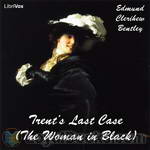 Trent's Last Case
Trent's Last Case
This is one of a series of EC Bentley novels featuring the highly erudite artist qua reporter / detective, Philip Trent.In it, Trent is sent to a charming English seaside village to cover the murder of Sigsbee Manderson for a large London newspaper. The victim is an unpopular and extremely powerful financial tycoon, who is murdered virtually within sight of his own house, at a time when it seems impossible that anyone there – to say nothing of all of its more than half dozen inhabitants – could have failed to see or hear the crime being committed... | |
By: Edmund Dene Morel (1873-1924) | |
|---|---|
 Red Rubber: The Story of the Rubber Slave Trade on the Congo
Red Rubber: The Story of the Rubber Slave Trade on the Congo
Morel explains the history and formation of the Congo Free State, owned by King Leopold II. However, Morel, a humanitarian, focuses on the atrocities commited in the Congo through the enslavement of the native population, leading to the deaths of as much as 50 percent of the population. Writing in the early 20th century, he argues Britain can and should stop these horrific human rights violations. - Summary by Elsie Selwyn | |
 African Problem and the Peace Settlement
African Problem and the Peace Settlement
In this essay, the author directs our attention on the African continent and describes how the exploitation and colonization of Africa by European powers contributed to the then-ongoing World War. Without a just and measured settlement of African concerns, the promise is for continued warfare among nations even after the peace to be negotiated at the close of the European conflict. - Summary by KevinS | |
By: Edmund Dulac (1882-1953) | |
|---|---|
 Edmund Dulac's Fairy Tale Book
Edmund Dulac's Fairy Tale Book
Unusual Fairy Tales from around the world, this story collection contains; a mother with two daughters both named Caroline, a carriage drawn by winged frogs, a prince turned into a bird and a princess in the form of a deer, a fairy in the shape of a talking crayfish and Ivan, who crawls into his horse's ear. In the usual style of fairy tales most of these have a moral and a happy ending! | |
By: Edmund Gill Swain (1861-1938) | |
|---|---|
 Stoneground Ghost Tales
Stoneground Ghost Tales
The Stoneground Ghost Tales is a collection of nine short stories set in and around a church and parish on the edge of England's fen country. The protagonist, the Rector of Stoneground, the Reverend Roland Batchel, is a kindly, humane bachelor and amateur antiquarian, very much like Swain himself. | |
By: Edmund Gosse (1849-1928) | |
|---|---|
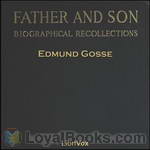 Father and Son
Father and Son
Father and Son (1907) is a memoir by poet and critic Edmund Gosse, which he subtitled “a study of two temperaments.” The book describes Edmund’s early years in an exceptionally devout Plymouth Brethren home. His mother, who dies early and painfully of breast cancer, is a writer of Christian tracts. His father, Philip Henry Gosse, is an influential, though largely self-taught, invertebrate zoologist and student of marine biology who, after his wife’s death, takes Edmund to live in Devon... | |
 Gossip in a Library
Gossip in a Library
A collection of informal essays about books in his library. He combines commentary, translations, and humorous asides about authors and their subjects. | |
 Train of Life
Train of Life
LibriVox volunteers bring you nine readings of The Train of Life by Edmund Gosse. This was the weekly poetry project for the week of September 28th, 2014. | |
By: Edmund John Eyre (1767-1816) | |
|---|---|
 Lady of the Lake
Lady of the Lake
At the request of Mr. Siddons, Manager and Patentee of the Theatre Royal, Edinburgh, the following Performance was composed. I am very sensible that Mr. Scott’s Poem of “The Lady of the Lake” afforded material for a much superior Drama than the one here presented to the public; but as Mr. Siddons, in all his correspondence with me on the subject, urged expedition, I was more attentive to the interest of a Friend than to the fame of an Author; and the whole piece was arranged, written, and copied in the short space of ten days... | |
By: Edmund Leamy (1848-1904) | |
|---|---|
 Golden Spears, and other Fairy Tales
Golden Spears, and other Fairy Tales
This is a little volume of original fairy tales by Irish lawyer, author and politician Edmund Leamy. - Summary by Carolin | |
By: Edmund Plauchut (1824-1909) | |
|---|---|
 China and the Chinese
China and the Chinese
Edmund Plauchut spent many years in China and gives an account of his observations of the places, people, and culture as he experienced them through the eyes of a European near the beginning of the 20th century. | |
By: Edmund Selous (1857-1934) | |
|---|---|
 Tommy Smith's Animals
Tommy Smith's Animals
Tommy Smith is a wicked little boy, who would harm animals for sport. He would catch them if he could, throw stones if he could not, and generally disturb all animals around him. He became such a nuissance to everyone at last that the animals hold a meeting to discuss what to do. The wise owl has an idea: "Let the next animal that he is going to kill or throw stones at, call out to him, and tell him not to do so. This will surprise him so much that he will be sure to leave off, and then each of us can tell him something about ourselves in turn... | |
 Beautiful Birds
Beautiful Birds
In this volume, Edmund Selous explains the beauty of birds to children. We meet some of the most beautiful birds in the world, and learn about their lives. We also learn what to do when our mothers decide to wear hats with stuffed birds on them! - Summary by Carolin | |
By: Edmund Spenser (c.1552-1599) | |
|---|---|
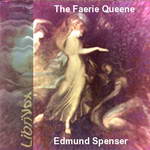 The Faerie Queene
The Faerie Queene
“The First Book of the Faerie Queene Contayning The Legende of the Knight of Red Crosse or Holinesse”. The Faerie Queene was never completed, but it continues to be one of the most beautiful and important works of literature ever written. Spenser wrote it as a paean to the Virgin Queen Elizabeth, and to the golden age which she had brought to England. Sponsored by Sir Walter Raleigh and commended by the foremost literary minds of his day, Spenser’s book remains one of the crowning poetic achievements of the Elizabethan period. | |
 Amoretti: A sonnet sequence
Amoretti: A sonnet sequence
The Amoretti (meaning little love poems) is a sequence of 89 sonnets written in the tradition of the Petrarchan sonnets, a popular form for poets of the Renaissance period. Spenser’s sequence has been largely neglected in modern times, while those of his contemporaries William Shakespeare and Sir Philip Sidney have been acclaimed. However, because of the artistic skill, along with the emotion and the humor exhibited, these poems deserve a broader hearing, even though they may be somewhat difficult for the present-day reader, partly through Spenser’s love for words and expressions that were already archaic in his time... | |
 Faerie Queene (version 2)
Faerie Queene (version 2)
Spenser planned a 24-book romance-epic consisting of two parts, of which he completed half of the first. The first twelve books were to illustrate the development of virtues within the individual soul, and the second twelve were to depict the application of these moral virtues to remedying evils that afflict the world. Each of the first set of quests was to begin at the court of the Fairy Queen, Gloriana, and the knights were to return thither after having defeated some foe representing a personal weakness... | |
 Stories from the Faerie Queen
Stories from the Faerie Queen
A major work by Spenser, The Faerie Queen, was published between 1590 and 1596. As an allegorical work, it can be read on many levels. According to Jeanie Lang, Spenser always looked for the beautiful and the good when he wrote. Lang said, "There are many stories in The Faerie Queen, and out of these all I have told you only eight." The eight are "Una and the Lion," "St. Gergoe and the Dragon," "Britomart and the Magic Mirror," "The Quest of Sir Gregory," "Pastorella," "Cambell and Triamond," "Marinell the Sea-Nymph's Son," and "Flormell and the Witch." | |
 Brittains Ida or Venus and Anchises
Brittains Ida or Venus and Anchises
While hunting, the boy Anchises stumbles upon Venus's forest retreat and is so kindly entertained by the goddess that he becomes the proud father of Aeneas, the hero of Vergil's Aeneid. The poem is an epyllion like Marlowe's "Hero and Leander" and Shakespeare's "Venus and Adonis," a short erotic poem with a mythological subject. The style is Spenserian, the stanzas rhyming ababbccc. When Brittain's Ida was published in 1628, the publisher ascribed it to Edmund Spenser. However, in 1926 Ethel Seaton discovered and published Fletcher's original manuscript, whose opening stanzas make clear that this is the work of Fletcher, who entitled it "Venus and Anchises." | |
By: Edna Adelaide Brown (1875-1944) | |
|---|---|
 Chinese Kitten
Chinese Kitten
Lucy and Dora are so excited to learn they will be sleeping in a tent at the beach! Then Mother and Uncle Dan tell them that their kitten, Timmy is not invited, and Father says he might even run away. Arrangements must be made for Timmy... but will he agree to their plans? This charming story follows two sisters over the course of about a year and the things that they do with their family. The Chinese kitten is a part of an old chess set that the girls get from their aunt because one of the girls lost her necklace during a camping trip. Lots of working on needle point, washing dishes, going to school, and different holidays and what they do during them. | |
 Silver Bear
Silver Bear
This is the first Lucy and Dora story. A charming story about Lucy and Dora, two little girls in a New England town. They are not really sisters, but soon everyone forgot that fact. The Silver Bear is a necklace, treasured by the girls. | |
By: Edna Brush Perkins (1880-1930) | |
|---|---|
 The White Heart of Mojave
The White Heart of Mojave
"The White Heart of the Mojave" recounts a 1920's adventure "in the wind and sun and big spaces" of Death Valley by two independent minded women, Edna Brush Perkins and Charlotte Hannahs Jordan. Both women were early feminists, Edna as chairwoman of the greater Cleveland Woman's Suffrage Party (1916-18). At the end of the Great War, the two friends wanted nothing more than to escape "to the solitariness of some wild and lonely place far from city halls, smokestacks, national organizations, and streets of little houses all alike... | |
By: Edna Ferber (1885-1968) | |
|---|---|
 Fanny Herself
Fanny Herself
Fanny Herself is the story of Fanny Brandeis, a sensitive, young Jewish girl coming of age in the Midwest at the turn of the 20th century. It is generally considered to have been based on Ferber’s own experiences growing up in Appleton, Wisconsin. Fanny’s inner struggle between her compassionate, artistic side and her desire for financial independence as a successful young businesswoman is the recurring theme of the novel. Ferber’s engaging style of writing will quickly draw you into her story... | |
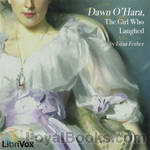 Dawn O'Hara, The Girl Who Laughed
Dawn O'Hara, The Girl Who Laughed
Dawn O’Hara, the Girl Who Laughed was Edna Ferber’s first novel. Dawn, a newspaperwoman working in New York, finds herself back home in Michigan on doctor’s orders. Years of living in boarding-houses and working to pay for the care of her brilliant but mentally ill husband, Peter Orme, have taken their toll. At twenty-eight, Dawn feels like an old woman with no future. But, the loving care of her sister Norah and her family along with the attentions of the handsome German doctor, Ernst Von Gerhard, slowly bring Dawn back to life... | |
 Buttered Side Down
Buttered Side Down
"And so," the story writers used to say, "they lived happily ever after." Um-m-m—maybe. After the glamour had worn off, and the glass slippers were worn out, did the Prince never find Cinderella's manner redolent of the kitchen hearth; and was it never necessary that he remind her to be more careful of her finger-nails and grammar? After Puss in Boots had won wealth and a wife for his young master did not that gentleman often fume with chagrin because the neighbors, perhaps, refused to call on the lady of the former poor miller's son? It is a great risk to take with one's book-children... | |
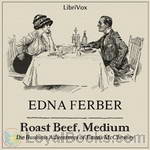 Roast Beef, Medium
Roast Beef, Medium
This book follows the adventures of Emma McChesney, a smart and savvy divorced mother who travels the Midwest as a sales representative for a large skirt and petticoat manufacturer. Her many adventures with people, (including predatory salesmen and hotel clerks), are funny and poignant. She is hardworking and able to outsell the slickest of the men salesmen. She has learned to focus on her work and her seventeen-year-old son, Jock. Experience has taught her that it is usually best to stick to roast beef, medium and not get stomach ache with fancy sauces and exotic dishes... | |
 One Basket
One Basket
This sparkling collection of 7 short stories by Ferber including some that are considered her all time best like The Woman Who Tried To be Good and The Maternal Feminine. Writing for and about women, Edna Ferber touches the very heart and soul of what it means to be human; to make good choices and bad; to be weak and strong. This was a very popular book when published in 1913 | |